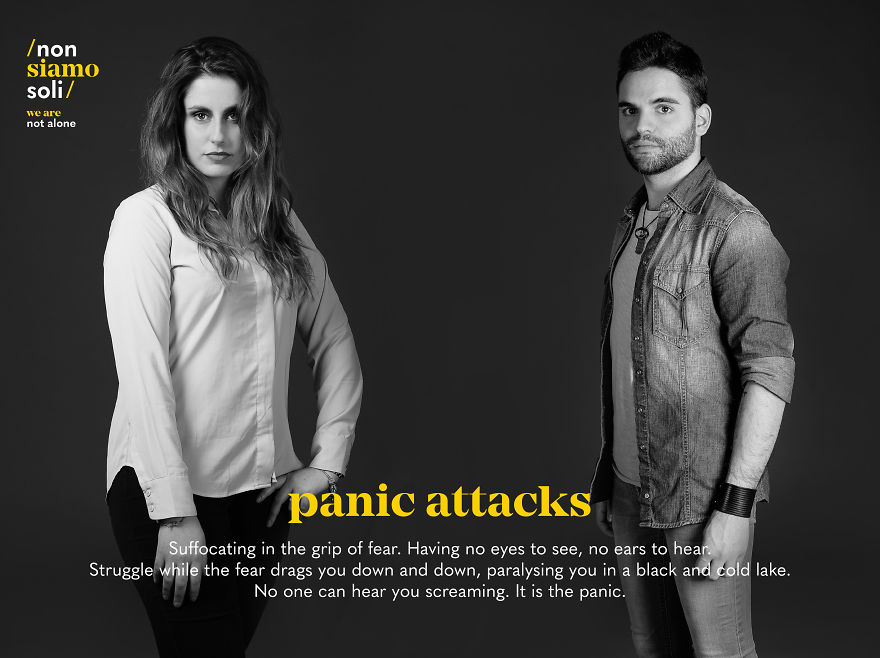I have bipolar disorder.
When I was diagnosed I had some qualms about telling about it even to my friends but especially at work.
Then in mid 2014 I had a big crisis and I was forced by it to tell to all my family and friends.
It was a liberation. Since then I have significantly changed my way of approaching it. I tell people but especially at interviews or at work in general.
But before starting let’s explain what is.
Bipolar disorder, also known as manic-depressive illness, is a brain disorder that causes unusual shifts in mood, energy, activity levels, and the ability to carry out day-to-day tasks.
There are four basic types of bipolar disorder; all of them involve clear changes in mood, energy, and activity levels. These moods range from periods of extremely “up,” elated, and energized behavior (known as manic episodes) to very sad, “down,” or hopeless periods (known as depressive episodes). Less severe manic periods are known as hypomanic episodes.
Bipolar I Disorder — defined by manic episodes that last at least 7 days, or by manic symptoms that are so severe that the person needs immediate hospital care. Usually, depressive episodes occur as well, typically lasting at least 2 weeks. Episodes of depression with mixed features (having depression and manic symptoms at the same time) are also possible.
Bipolar II Disorder — defined by a pattern of depressive episodes and hypomanic episodes, but not the full-blown manic episodes described above.
Cyclothymic Disorder (also called cyclothymia) — defined by numerous periods of hypomanic symptoms as well numerous periods of depressive symptoms lasting for at least 2 years (1 year in children and adolescents). However, the symptoms do not meet the diagnostic requirements for a hypomanic episode and a depressive episode.
Other Specified and Unspecified Bipolar and Related Disorders — defined by bipolar disorder symptoms that do not match the three categories listed above.
I have bipolar II and I always tend to a certain level of hypomanic status.
This make me more productive, more creative, more dreamy. And I sort of like it. Because make me even more positive. Even although depressive periods are really hard.
As you has read bipolarism is a brain disorder: it is what you have not who you are. At least not entirely. I know that I behave in certain ways because I have this disorder. But I also think that it makes me better.
Bipolarism is seen as a stigma, sometimes scares people and I know it for sure when I talk about it and I look into the eyes of the person I am speaking to. He or she thinks that I am different, or that I am dangerous in some way. I am different and this is not necessarily a bad thing.
Bipolarism made me seen people differently: It made me think that every person that I met on the street could have his own issues, problems so I have always to respect this person. I have to respect everyone although for the common thought they are different. I don’t like stereotypes anymore.
I start telling about my situation at interviews and I have seen really the most different reactions: empathy, understanding, fear, indifference and even scorn.
But I keep thinking it is the right way: I respect myself and what I have so the people I work with have to respect it too.
If I had other chronic diseases, such as diabetes, I would be treated normally. So I want it too for bipolar disorder.
So people that have some kind of psychiatric disorder don’t be scare, talk about it, it would make you better and free.
That’s why I decided to create this project together my two good friends Floriana and Camilla.
The project aims to tell the stories of the people who suffer from psychiatric disorders, letting them free to create a communicative channel with the world of “normal” people, through the use of their own images and words.
The psychiatric patient is exactly alike to a person who does not suffer of any disorder: he/she has the same rights and duties, the same abilities and the same flaws. The border between “sane” and “ill” people is often so thin that seems more like as an imposition deriving from our society: reality is made of shades and hues, not of clear divisions. The “democracy” of disorders strikes also the gender bias: men and women can be equally affected by mental disorders. It is essential to demolish the prejudice according to which feminine psyche is more fragile and exposed than the male one.
THE POSTERS
The poster are composed of two people, a sane person and an ill person, portrayed in the same “environment”, knee figure and in a natural pose to enhance the closeness of the observer’s look. The two persons are portrayed in parallel and pull together in the final picture so the audience will not be able to understand which one is the person that suffers from mental disorders. Since there is no difference between these two persons. The poster will have a caption referred to the represented disorder.
There is no difference between an ill person and a sane one. You can see from our photos.
We hope to help ill people to speak free about their disorders.
ART DIRECTOR – ILARIA IACOVIELLO
PHOTOGRAPHER – FLORIANA MANTOVANI
COPYWRITER – CAMILLA MACCAFERRI
GRAPHIC DESIGNER – VALERIA FARINA
MUA – GAIA VERONESE
LOCATION – BRAINSTORM STUDIO MILANO
MODELS
Laura Sansotera Federico D’Agostin Roberto Gatti Ilaria Iacoviello Marina Codari Marco Sangiovanni Sonia Zanierato Andrea Gessa Chiara Iacoviello Federica Grossi.
More info: nonsiamosoliproject.com

 Dark Mode
Dark Mode 

 No fees, cancel anytime
No fees, cancel anytime 

































3
0